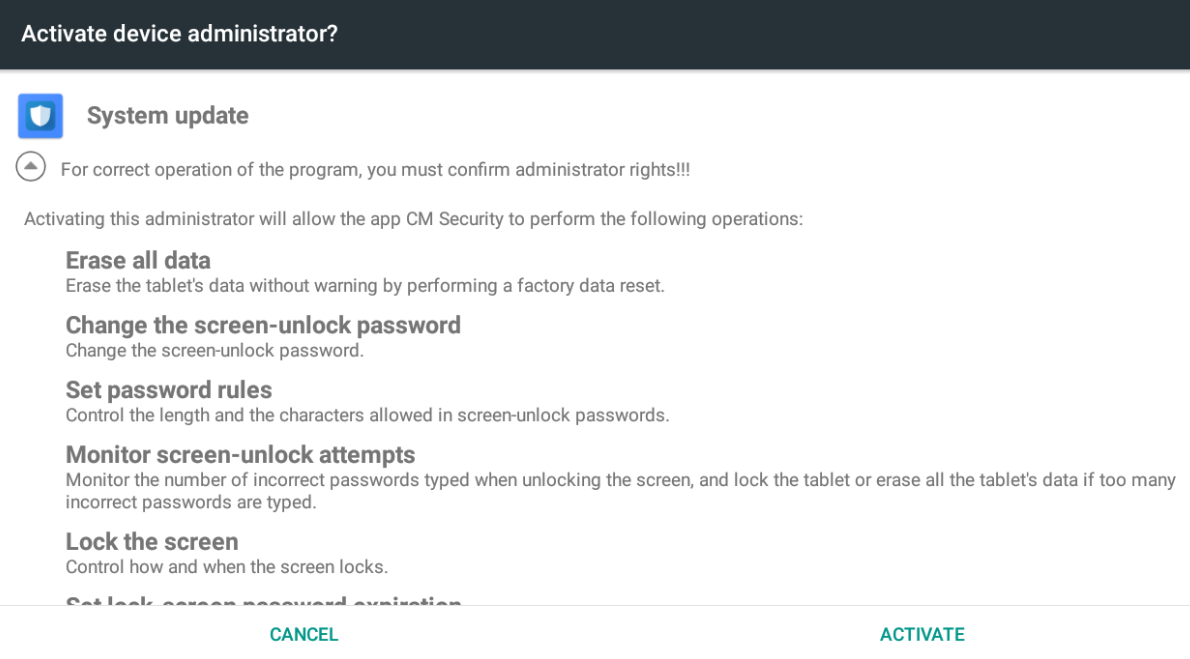Microsoft Security Bulletin Coverage for January 2018
SonicWall has analyzed and addressed Microsoft’s security advisories for the month of January, 2018. A list of issues reported, along with SonicWall coverage information are as follows:
- CVE-2018-0741 Microsoft Color Management Information Disclosure Vulnerability
There are no known exploits in the wild.
- CVE-2018-0743 Windows Subsystem for Linux Elevation of Privilege Vulnerability
There are no known exploits in the wild.
- CVE-2018-0744 Windows Elevation of Privilege Vulnerability
There are no known exploits in the wild.
- CVE-2018-0745 Windows Information Disclosure Vulnerability
There are no known exploits in the wild.
- CVE-2018-0746 Windows Information Disclosure Vulnerability
There are no known exploits in the wild.
- CVE-2018-0747 Windows Information Disclosure Vulnerability
There are no known exploits in the wild.
- CVE-2018-0748 Windows Elevation of Privilege Vulnerability
There are no known exploits in the wild.
- CVE-2018-0749 SMB Server Elevation of Privilege Vulnerability
There are no known exploits in the wild.
- CVE-2018-0750 Windows GDI Information Disclosure Vulnerability
There are no known exploits in the wild.
- CVE-2018-0751 Windows Elevation of Privilege Vulnerability
There are no known exploits in the wild.
- CVE-2018-0752 Windows Elevation of Privilege Vulnerability
There are no known exploits in the wild.
- CVE-2018-0753 Windows IPSec Denial of Service Vulnerability
There are no known exploits in the wild.
- CVE-2018-0754 OpenType Font Driver Information Disclosure Vulnerability
There are no known exploits in the wild.
- CVE-2018-0758 Scripting Engine Memory Corruption Vulnerability
IPS:13155 Scripting Engine Memory Corruption Vulnerability (JAN 18) 1
- CVE-2018-0762 Scripting Engine Memory Corruption Vulnerability
IPS:13156 Scripting Engine Memory Corruption Vulnerability (JAN 18) 2
- CVE-2018-0764 .NET and .NET Core Denial Of Service Vulnerability
There are no known exploits in the wild.
- CVE-2018-0766 Microsoft Edge Information Disclosure Vulnerability
There are no known exploits in the wild.
- CVE-2018-0767 Scripting Engine Information Disclosure Vulnerability
There are no known exploits in the wild.
- CVE-2018-0768 Scripting Engine Memory Corruption Vulnerability
There are no known exploits in the wild.
- CVE-2018-0769 Scripting Engine Memory Corruption Vulnerability
There are no known exploits in the wild.
- CVE-2018-0770 Scripting Engine Memory Corruption Vulnerability
There are no known exploits in the wild.
- CVE-2018-0772 Scripting Engine Memory Corruption Vulnerability
There are no known exploits in the wild.
- CVE-2018-0773 Scripting Engine Memory Corruption Vulnerability
There are no known exploits in the wild.
- CVE-2018-0774 Scripting Engine Memory Corruption Vulnerability
There are no known exploits in the wild.
- CVE-2018-0775 Scripting Engine Memory Corruption Vulnerability
There are no known exploits in the wild.
- CVE-2018-0776 Scripting Engine Memory Corruption Vulnerability
IPS:13157 Scripting Engine Memory Corruption Vulnerability (JAN 18) 3
- CVE-2018-0777 Scripting Engine Memory Corruption Vulnerability
IPS:13158 Scripting Engine Memory Corruption Vulnerability (JAN 18) 4
- CVE-2018-0778 Scripting Engine Memory Corruption Vulnerability
There are no known exploits in the wild.
- CVE-2018-0780 Scripting Engine Information Disclosure Vulnerability
There are no known exploits in the wild.
- CVE-2018-0781 Scripting Engine Memory Corruption Vulnerability
There are no known exploits in the wild.
- CVE-2018-0784 ASP.NET Core Elevation Of Privilege Vulnerability
There are no known exploits in the wild.
- CVE-2018-0785 ASP.NET Core Cross Site Request Forgery Vulnerabilty
There are no known exploits in the wild.
- CVE-2018-0786 .NET Security Feature Bypass Vulnerability
There are no known exploits in the wild.
- CVE-2018-0787 ASP.NET Core Elevation Of Privilege Vulnerability
There are no known exploits in the wild.
- CVE-2018-0788 OpenType Font Driver Elevation of Privilege Vulnerability
There are no known exploits in the wild.
- CVE-2018-0789 Microsoft SharePoint Cross Site Scripting Elevation of Privilege Vulnerability
There are no known exploits in the wild.
- CVE-2018-0790 Microsoft SharePoint Cross Site Scripting Elevation of Privilege Vulnerability
There are no known exploits in the wild.
- CVE-2018-0791 Microsoft Outlook Remote Code Execution Vulnerability
There are no known exploits in the wild.
- CVE-2018-0792 Microsoft Word Remote Code Execution Vulnerability
There are no known exploits in the wild.
- CVE-2018-0793 Microsoft Outlook Remote Code Execution Vulnerability
There are no known exploits in the wild.
- CVE-2018-0794 Microsoft Word Remote Code Execution Vulnerability
There are no known exploits in the wild.
- CVE-2018-0795 Microsoft Office Remote Code Execution Vulnerability
There are no known exploits in the wild.
- CVE-2018-0796 Microsoft Excel Remote Code Execution Vulnerability
There are no known exploits in the wild.
- CVE-2018-0797 Microsoft Word Memory Corruption Vulnerability
There are no known exploits in the wild.
- CVE-2018-0798 Microsoft Office Memory Corruption Vulnerability
There are no known exploits in the wild.
- CVE-2018-0799 Microsoft Access Tampering Vulnerability
There are no known exploits in the wild.
- CVE-2018-0800 Scripting Engine Information Disclosure Vulnerability
There are no known exploits in the wild.
- CVE-2018-0801 Microsoft Office Remote Code Execution Vulnerability
There are no known exploits in the wild.
- CVE-2018-0802 Microsoft Office Memory Corruption Vulnerability
There are no known exploits in the wild.
- CVE-2018-0803 Microsoft Edge Elevation of Privilege Vulnerability
There are no known exploits in the wild.
- CVE-2018-0804 Microsoft Word Remote Code Execution Vulnerability
There are no known exploits in the wild.
- CVE-2018-0805 Microsoft Word Remote Code Execution Vulnerability
There are no known exploits in the wild.
- CVE-2018-0806 Microsoft Word Remote Code Execution Vulnerability
There are no known expl
oits in the wild.
- CVE-2018-0807 Microsoft Word Remote Code Execution Vulnerability
There are no known exploits in the wild.
- CVE-2018-0808 ASP.NET Core Denial Of Service Vulnerability
There are no known exploits in the wild.
- CVE-2018-0812 Microsoft Word Memory Corruption Vulnerability
There are no known exploits in the wild.
- CVE-2018-0818 Scripting Engine Security Feature Bypass
There are no known exploits in the wild.
- CVE-2018-0819 Spoofing Vulnerability in Microsoft Office for MAC
There are no known exploits in the wild.
Adobe vulnerabilities:
APSB18-01 Security updates for Adobe Flash Player:
- CVE-2018-4871 Adobe Flash Player Information Disclosure Vulnerability
SPY:5055 Malformed-File atf.MP.2






















